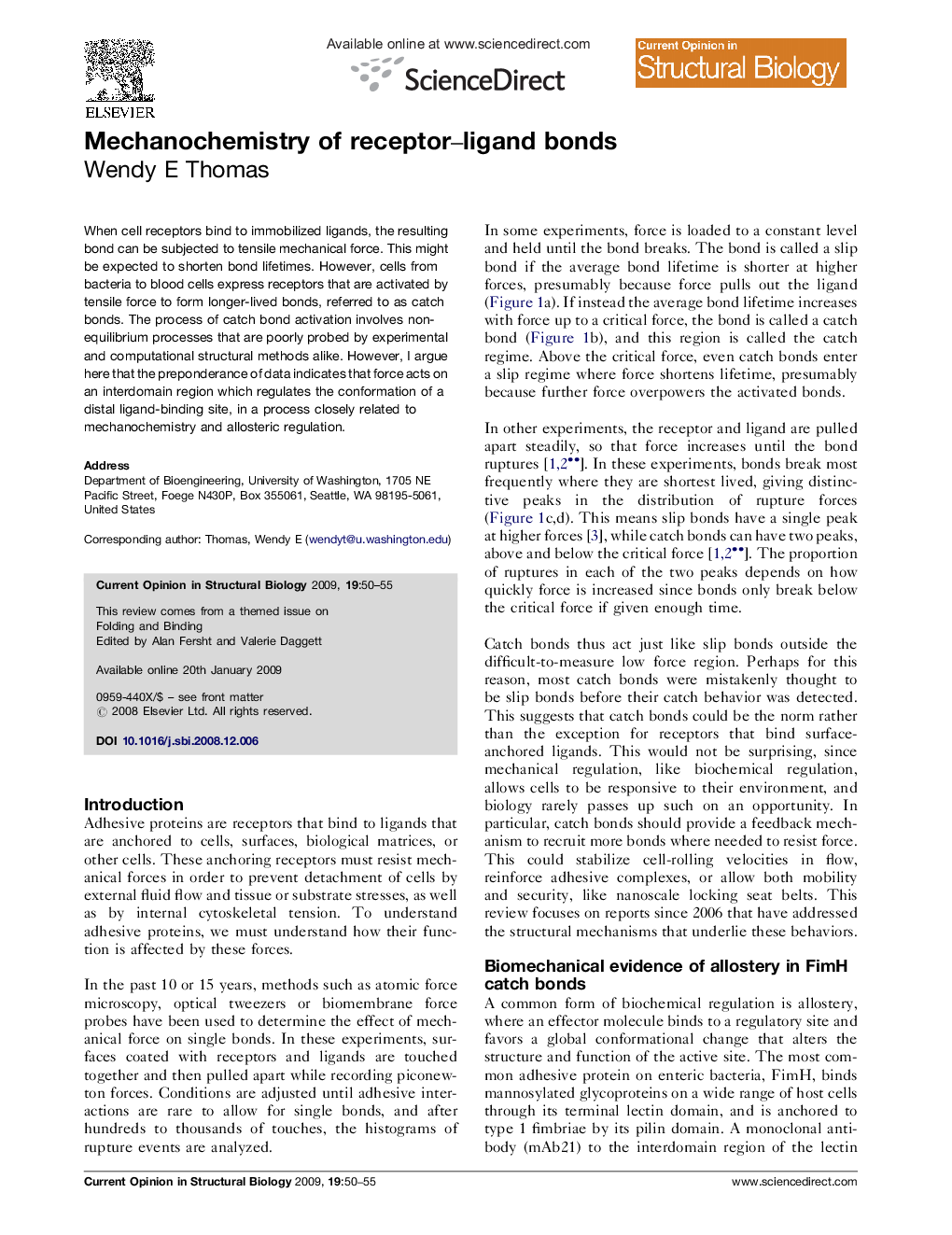| Article ID | Journal | Published Year | Pages | File Type |
|---|---|---|---|---|
| 10822642 | Current Opinion in Structural Biology | 2009 | 6 Pages |
Abstract
When cell receptors bind to immobilized ligands, the resulting bond can be subjected to tensile mechanical force. This might be expected to shorten bond lifetimes. However, cells from bacteria to blood cells express receptors that are activated by tensile force to form longer-lived bonds, referred to as catch bonds. The process of catch bond activation involves non-equilibrium processes that are poorly probed by experimental and computational structural methods alike. However, I argue here that the preponderance of data indicates that force acts on an interdomain region which regulates the conformation of a distal ligand-binding site, in a process closely related to mechanochemistry and allosteric regulation.
Related Topics
Life Sciences
Biochemistry, Genetics and Molecular Biology
Biochemistry
Authors
Wendy E Thomas,
